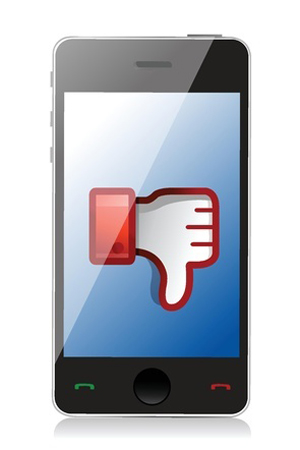- May 29, 2014
- By Cleriti Blogger
- In Social Media and Digital Marketing
How to Be Awful at Social Media (and How to Survive It)

 Social media can be a great inbound marketing tool or it can be a company’s worst nightmare. When taking to sites like Twitter and Facebook in an attempt to engage existing customers and gain new ones, several companies have made some pretty impressive mistakes that put them in a rather unflattering light. Take a look at these social media faux pas hall of famers and take a lesson from the tough ones they learned.
Social media can be a great inbound marketing tool or it can be a company’s worst nightmare. When taking to sites like Twitter and Facebook in an attempt to engage existing customers and gain new ones, several companies have made some pretty impressive mistakes that put them in a rather unflattering light. Take a look at these social media faux pas hall of famers and take a lesson from the tough ones they learned.
The Angry StubHub Employee
This comes from the "you probably don’t want angry people who hate your company doing your social media” files. In 2012, a disgruntled StubHub employee decided to tweet his relief that it was Friday and his discontent with working for them – with expletives. Thing is, while he thought he was posting to his personal account, he was actually posting to the company account.
Although the post was removed quickly and an apology issued, the damage was already done.
Lesson learned: Know who is handling your social media accounts. Know what attitude they have towards the company – and keep tabs on them. If they begin to get frustrated or get upset with the organization you probably should find a more suitable, happier face for your online presence.
Insensitivity
It is mind-boggling the number of businesses that make light of serious issues or (and this might be worse) try to capitalize on a bad situation. Such is the case with these companies. During Hurricane Sandy in 2012, several (yes, several) companies sent out tweets and posts encouraging people to ‘stay safe’ and ‘shop online.’ The Gap and American Apparel are just two of the businesses that sent out tweets encouraging people to shop online during a time when most people had other more pressing matters on their minds.
Kenneth Cole sent out a tweet making light of the military action is Syria, capitalizing on the “boots on the ground” comment. He took it a step farther and reminded his followers to not forget “sandals, pumps and loafers.” And that wasn’t the first time.
Lesson Learned: Keep serious situations serious. It is one thing tell your followers to stay safe during a hurricane. It is something completely different to tell them while they are hunkered down staying safe they should do a little online shopping.
The Hashtag Debacle(s)
Hashtags are like friends, you have to choose them carefully. Unfortunately, no one told McDonalds when they launched a campaign with the hashtag #McDStories. The stories that came out of that campaign were probably not what McD’s had in mind as people slammed the company mercilessly – and always attaching that hashtag.
Susan Boyle’s PR team made a similar mistake when they attached #susanalbumparty to her album party campaign. The attention that resulted was not what the PR team was hoping for as people took to their Twitter accounts mocking and poking fun at the mishap. They moved quickly to change the hashtag to something more appropriate, but by then it was too late.
Entenmanns also committed a hashtag blunder when they used the hashtag #notguilty in reference to eating their delicious treats on the same day that it was being used in reference to the Casey Anthony murder trial. Oops.
Lesson Learned: Read your hashtags before you post, please. Consider every interpretation that anyone could possibly come up with before you use it in your campaign. And when you do post, have some filters in place. But make sure you research your hashtags first. A quick search before you begin can save you a black eye after you post.
The Awesome Near Miss
Now this is a great example of damage control. An employee for American Red Cross accidentally confused Twitter accounts and posted about getting drunk on Dogfish Head’s Midas Touch beer – on the Red Cross Twitter account. The employee owned up to the mistake and apologized, using humor to admit she was not familiar with the software used to manage the social media accounts.
This mistake, though, turned into a powerful campaign for the Red Cross. Dogfish picked up on the mistake and ran their own campaign using the hashtag #gettingslizzerd to create some buzz and generate donations for ARC.
Lesson Learned: If you mess up, fess up. If you can inject a little humor you can quickly recover and you just might pick up some new customers along the way.
Bottom Line
Social media can be a powerful tool when used correctly. It can also be a dangerous mine field in the hands of someone who isn’t paying attention or doesn’t know what they are doing. In the end, attention to detail is what will make your campaign and win you customers. Pay attention, stay sharp and don’t be afraid to say “I made a mistake.” Your customers are human, just like you.





